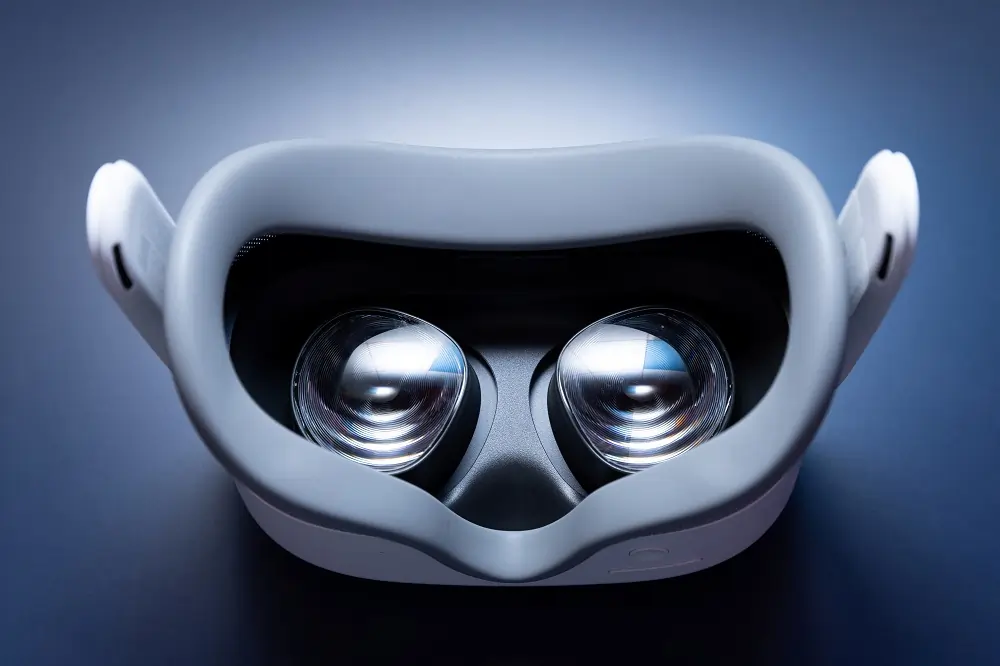
By Katie Paul
MENLO PARK, California (Reuters) -Facebook owner Meta Platforms showed off its first working prototype of augmented-reality glasses, called Orion, during its annual Connect conference at its California headquarters on Wednesday, along with updates to its existing virtual-reality and artificial-intelligence products.
“This is the physical world with holograms overlaid on,” Chief Executive Mark Zuckerberg said after pulling out the chunky black glasses from a metal case dramatically brought to him on stage.
The Orion glasses are made of magnesium alloy and powered by custom silicon designed by Meta. Users will be able to interact with the glasses through hand-tracking voice and wrist-based neural interface. Zuckerberg called Orion a “dev kit” and said Meta planned to work on making it smaller, sleeker and more low-cost for consumers later on.
The company’s shares were up nearly 2% on Wednesday afternoon.
Meta also announced a slew of software enhancements to the AI assistant that has driven interest in the Ray-Ban Meta smart glasses, making it possible for users, for example, to scan QR codes and stream music from Spotify in response to voice prompts.
Later this year, the company plans to add video capabilities and the ability to perform real-time language translation between English and French, Italian or Spanish, and Zuckerberg demonstrated the real-time translation.
The Facebook owner kicked off the Connect event with expanded bets on artificial intelligence, announcing a raft of new product offerings for its ChatGPT-like chatbot and plans to start automatically injecting personalized images created by the bot into people’s Facebook and Instagram feeds.
Meta also announced a new entry-level version of its Quest line of mixed-reality headsets, the Quest 3S.
Among the AI updates announced was an audio upgrade to the digital assistant, called Meta AI, which will now respond to voice commands and offer users the option to make the assistant sound like celebrities including Judi Dench and John Cena.
“I think that voice is going to be a way more natural way of interacting with AI than text,” Zuckerberg said.
The company said more than 400 million people are using Meta AI monthly, including 185 million who are returning to it weekly.
In keeping with its strategy of sharing the AI models powering its digital agent for free use by others, Meta released three new versions of its Llama 3 models. Two of the models are multimodal, meaning they can understand both images and text, while the third is a basic text-only model capable of running entirely on a user’s device, a key privacy advantage.
The augmented-reality reveal is a long time in the making for Zuckerberg, who positioned AR technology as a sort of magnum opus when he first pivoted the world’s biggest social media company toward building immersive “metaverse” systems in 2021.
However, Meta has struggled to overcome technical challenges with its AR project since then, prompting the head of the company’s metaverse-oriented Reality Labs division to acknowledge last year that a product it could viably bring to market was “still a few years away – a few, to put it lightly.”
The company has been plowing tens of billions of dollars into its investments in artificial intelligence, augmented reality and other metaverse technologies, driving up its capital expense forecast for 2024 to a record high of between $37 billion and $40 billion.
Its metaverse unit Reality Labs lost $8.3 billion in the first half of this year, according to the most recent disclosures. It lost $16 billion last year.
Riding a wave of excitement around emerging generative AI technology, the company announced at last year’s Connect conference that it was adding an AI-powered digital assistant to the Ray-Ban glasses, turning a once-forgotten device into the most popular AI wearable on the market.
Although Meta has not disclosed sales numbers for the smart glasses, the CEO of Ray-Ban maker EssilorLuxottica said this summer that more of the new generation sold in a few months than the old ones did in two years. Market research firm IDC estimates that more than 700,000 pairs of the glasses have shipped since the update last year.
Meta recently extended its partnership with EssilorLuxottica and contemplated a possible investment in the eyewear company, prompting speculation that the AR glasses may also bear the Ray-Ban name. More immediately, Meta’s road map for the smart glasses includes plans for a next generation that will feature a viewfinder capable of displaying basic text and images through the lenses.
It has been shipping software updates this year enhancing the AI assistant’s capabilities on the existing glasses, including an update in April that enabled the agent to identify and converse about objects seen by the wearer.
Set to hit shelves on Oct. 15, the Quest 3S headset will be offered in two storage capacity sizes, the smaller one priced at $299.99 and the other at $399.99.
With the launch, the company is discontinuing its older Quest 2 and high-end Quest Pro devices, while also dropping the price of the more powerful Quest 3 it introduced last year from $649.99 to $499.99.
(Reporting by Katie Paul in Menlo Park, CaliforniaAdditional reporting by Yuvraj Malik, Aditya Soni, Shanima A and Jaspreet Singh in BengaluruWriting by Peter HendersonEditing by Shri Navaratnam, Kenneth Li and Matthew Lewis)


